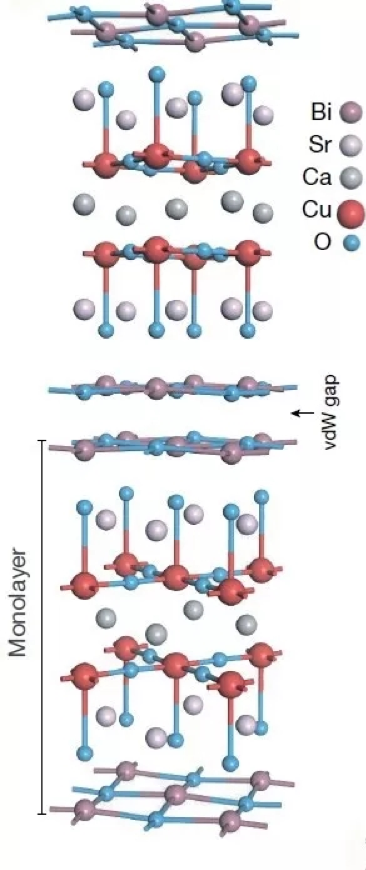As one of the most charming quantum phenomena, superconductivity is a promising and burgeoning field. However, the mechanism of abnormal high-temperature superconductivity(HTS) remains unclear. How to find the key to HTS has been obsessing scientists, among which physicists attempt to apply the most concise models in unmasking intrinsic rules.
Copper oxide high-temperature superconductors have a wide diversity of three dimensional layered lattice structures. So far, all discovered copper-based superconductors have the same copper oxide unit cells, which are regarded as the origin of HTS. Especially when theoretical physicists work on the mechanism of HTS, two dimensional model are based on these unit cells. As a result, it gives great importance and profound implications to experimentally validate whether two dimensional superconductors have the same superconductivity and fundamental physics with their bulk counterparts.

(The structure of Bi-2212)
After years of tests and trials, Prof. CHEN Xianhui of University of Science and Technology of China(USTC), Prof. ZHANG Yuanbo of Fudan University and their research group succeed in gaining monolayer Bi-2212 superconductors and demonstrating that monolayer copper-based superconductors and their bulk counterparts have the same transition temperature, carrier-concentration-based phase and therefore display exactly the same fundamental physics. These discoveries lay solid foundation for two dimensional model theory of HTS and shed new light on the research of high-temperature superconductors.
Paper link: https://www.nature.com/articles/s41586-019-1718-x
Written by LIU Wei, edited by YE Zhenzhen, USTC News Center.